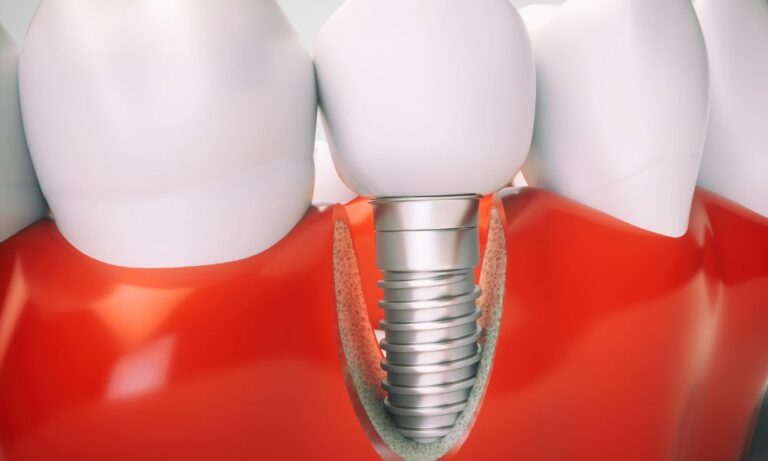Gingivitis, a mild form of gum disease, is a prevalent oral health condition caused by the accumulation of plaque and bacteria on the teeth and gums. Though gingivitis may seem relatively benign initially, it can progress into a more severe form of gum disease called periodontitis if left untreated. Periodontitis is a major cause of tooth loss and can result in a myriad of oral health complications. Recognizing and addressing the early signs of gingivitis is essential for preventing its progression and maintaining the health of your gums and teeth.
At Colorado Gum Care Northglenn, CO, our experienced team of dental professionals is dedicated to helping patients recognize and address the signs of gum disease, including gingivitis. We believe that early intervention and timely treatment are critical for preserving your oral health and preventing more severe consequences. By understanding the early signs of gingivitis and seeking appropriate care, you can take control of your gum health, protect your teeth, and maintain a vibrant, long-lasting smile.
In this blog, we will discuss how to identify the initial symptoms of gingivitis and provide guidance on addressing this gum condition effectively. With this knowledge, you can be better prepared to maintain your oral health and keep gingivitis at bay.
Take control of your gum health and schedule an appointment with Colorado Gum Care Northglenn, CO for an evaluation and personalized treatment plan that helps you address gingivitis in its early stages and secure a healthy, radiant smile.
Recognizing and Addressing the Early Signs of Gingivitis
Identifying the Early Symptoms of Gingivitis
1. Red, Swollen Gums
One of the first noticeable signs of gingivitis is a change in the appearance of your gums. Healthy gums are typically light pink and firm. If you observe that your gums have become red, swollen, or puffy, it may indicate that gingivitis is developing. Paying close attention to your gum’s appearance can help you identify and address gingivitis in its early stages.
2. Bleeding Gums
Bleeding while brushing or flossing can also be a sign of gingivitis. Although occasional, mild bleeding might occur if you brush too vigorously or use a hard-bristled toothbrush, persistent and unexplained bleeding could be a symptom of gum disease. If you notice frequent gum bleeding, it is essential to consult with a dental professional for an assessment.
3. Bad Breath
Persistent bad breath, also known as halitosis, can be another early sign of gingivitis. The buildup of plaque and bacteria on the teeth and gums can release a foul smell, resulting in bad breath. If you frequently experience bad breath even after maintaining proper oral hygiene, it could be an indication that you are developing gingivitis.
4. Gum Recession
Gum recession, or the appearance of your gums pulling away from your teeth, may be an early sign of gingivitis. This recession can result in the formation of pockets between the teeth and gums, where bacteria and plaque can accumulate. If you notice receding gums or changes in the spacing of your teeth, schedule an appointment with a dental professional to evaluate your gum health.
Addressing Gingivitis: Prevention and Treatment Options
1. Improve Oral Hygiene Practices
The most effective way to prevent and address gingivitis is through diligent oral hygiene practices. Brushing your teeth at least twice a day, flossing daily, and using an antimicrobial mouthwash can help remove plaque and bacteria, keeping your gums healthy. Additionally, make sure to replace your toothbrush every three to four months or sooner if the bristles become frayed, as worn-out bristles are less effective in cleaning your teeth and gums.
2. Regular Dental Checkups and Cleanings
Scheduling regular dental checkups and professional cleanings is another essential step in preventing and treating gingivitis. During these visits, your dental professional will conduct a thorough examination of your gums and remove any plaque or tartar that may have accumulated, which can cause gum inflammation. Generally, it is recommended to have a dental checkup and cleaning every six months or as advised by your dentist.
3. Nonsurgical Periodontal Treatment
For those who have developed gingivitis, a nonsurgical periodontal treatment called scaling and root planing can help reverse the condition. This procedure involves the removal of plaque and tartar buildup from the tooth surfaces and the smoothing of the tooth roots to prevent further buildup. Scaling and root planing can be highly effective in managing gingivitis and restoring the health of your gums, especially when combined with proper oral hygiene practices and regular dental checkups.
4. Lifestyle Changes
Making specific lifestyle changes can also contribute to gingivitis prevention and treatment. Eating a well-balanced diet rich in vitamins and minerals can improve your gum health by supporting the immune system and promoting good oral bacteria. Additionally, smoking cessation is essential, as tobacco use can exacerbate gum disease and impede the healing process.
Conclusion
Detecting the early signs of gingivitis and seeking the appropriate intervention is vital in preventing more severe forms of gum disease and maintaining your overall oral health. By understanding the symptoms of gingivitis and adhering to a comprehensive oral care routine, you can take control of your oral health, protect your teeth and gums, and maintain a beautiful, confident smile.
If you suspect that you may have gingivitis or need assistance in maintaining your gum health, schedule an appointment with Colorado Gum Care Northglenn, CO. Our team of dedicated professionals will provide you with a personalized periodontal disease treatment plan, addressing your gingivitis concerns and guiding you on the path to a healthy, gleaming smile.







